Top 10 tips for driving in snow
Be prepared
Plan for the worst. Make sure you’ve got warm clothes, a rug, a torch, a snow shovel and maybe some emergency food. Also, make sure your phone is fully charged before setting off or even, have a cheap mobile phone charged and ready to go in the glovebox just in case. Also wear decent driving shoes – driving in snow boots or wellies is a bad idea as it’s harder to feel the pedals under your feet. One strong recommendation we would give is to get your car fitted with winter tyres ahead of the cold weather. Once the temperature gets into single figures, then that’s when you should get them fitted.
Be smooth
When you’re driving avoid sudden applications of the throttle, brakes and steering. If you’re struggling for traction, don’t accelerate excessively – spinning the wheels will only make things worse. Try using second gear to gain grip when pulling away, while higher gears will help the tyres keep their grip. Some automatic gearboxes will offer a winter mode, while in a manual car, try to feel grip by slipping the clutch.
Brake smoothly
When driving on snow covered slopes, keep the speed slow at the top of the hill. It’s easier to maintain a steady speed than slow down on the descent. Leave big braking distances to vehicles in front – apply the brake pedal gently and avoid triggering the ABS, because the system can struggle to cope if conditions are very slippery. Older cars without ABS may stop sooner, thanks to the locked wheels causing a snowplough effect that sees snow build up in front of them.
See and be seen
When you start your car, give it plenty of time to warm up, and clear all the snow and ice from your windows and lights – not doing so could be seen as a traffic offence by the police. If there’s a lot of snow on the roof, this should be cleaned off, too, because if it falls off while you’re driving it could cause a hazard for other motorists. Ensure your screenwash isn’t frozen and your wipers aren’t stuck to your windows. When you’re driving, make sure your headlights are on and can be seen by other drivers.
Always plan ahead
Turn your radio on to hear the latest traffic and weather reports, and try and tune into a local station that will have more specific information on your part of the country. Conditions may not be too bad when you set off, but check ahead for your journey, too. If you don’t have winter tyres, try to avoid routes that have steep inclines and stick to main roads, which are more likely to have been treated.
Know your car’s safety systems
If you’ve got ESP, the stability control element will help you in a slide. But traction control can sometimes kill power too much and make it hard to get moving in heavy snow. Most cars will allow you to turn off the traction element of the stability control. If you have an auto box, check whether you have a winter mode.
Don’t panic in a slide
If the front wheels start to push across the road, don’t crank on more lock. Ease off the throttle and straighten the steering for a moment to allow the tyres to regain grip. If the rear of the car starts to drift, steer into the slide – known as applying opposite lock. Always look where you want the car to go, because this will help you go in the right direction. Avoid standing on the brakes, as this will lock them and cause ABS-equipped cars to lose their effectiveness.
Anticipation
In snowy and icy conditions, it takes longer to stop and turn. So reduce your speed and leave lots of extra room to the car in front. Watch out for cars around you that may be sliding or losing control. Snow-covered signs and obscured kerbs mean you should pay extra attention to the road infrastructure.
Invest in a course
Nothing takes away the fear of driving in snow more than experiencing it in a controlled environment with expert tuition. Winter driving courses in the Arctic are not cheap, but great fun, and you’ll come away with a host of new skills. If you’re on a tighter budget, a skid control course based on a wet track or in a car that’s fitted to a skid rig is worth doing.
• The best winter driving courses
Getting stuck
If you get stuck in snow and abandon your car, try to move it as far off the road as possible so that you don’t block the way for drivers who are able to continue. If the car starts to slide back down an incline, crank the steering to full lock and apply the handbrake – this will lock the rear wheels, while the fronts will build a bank of snow like a plough, slowing your descent.


